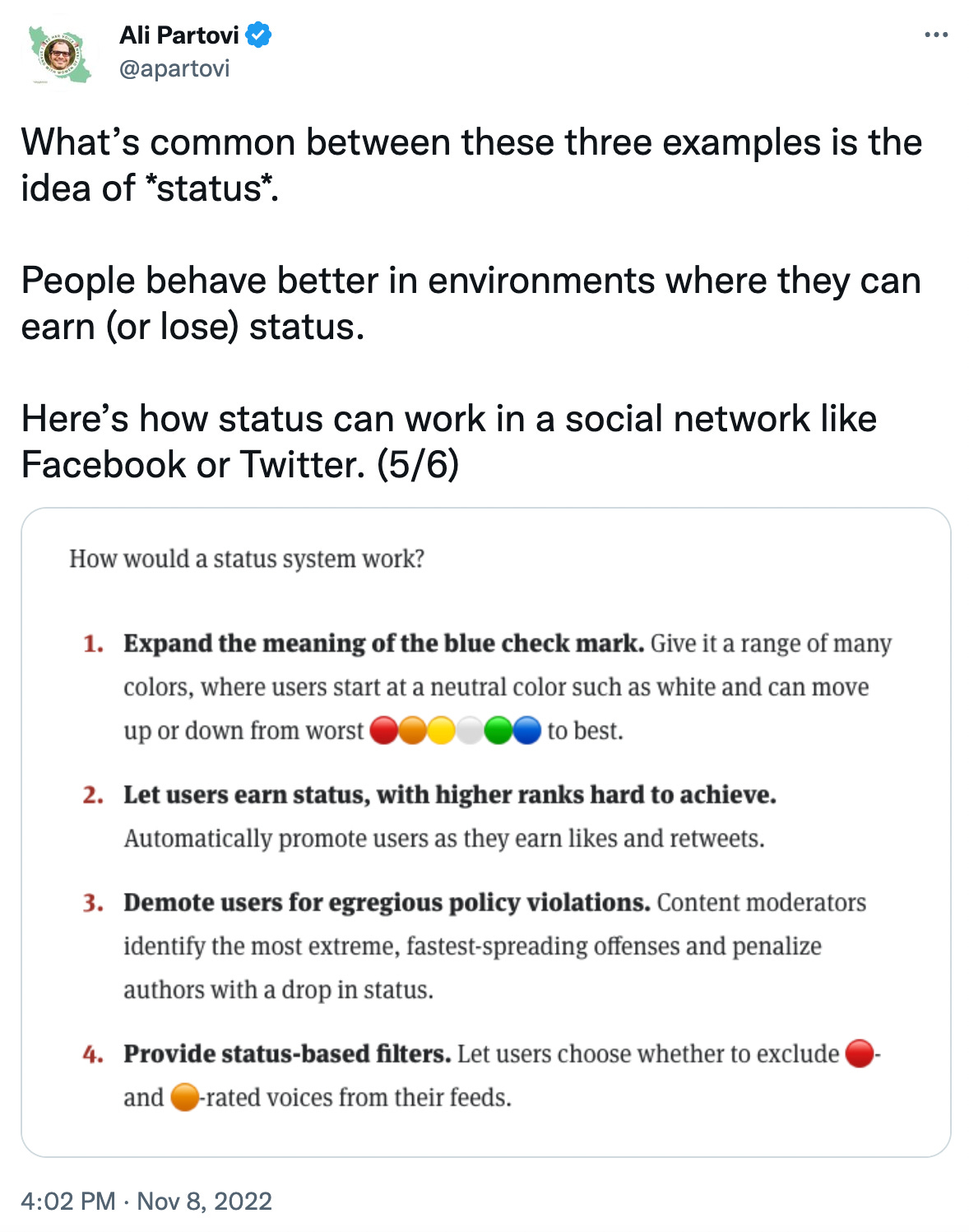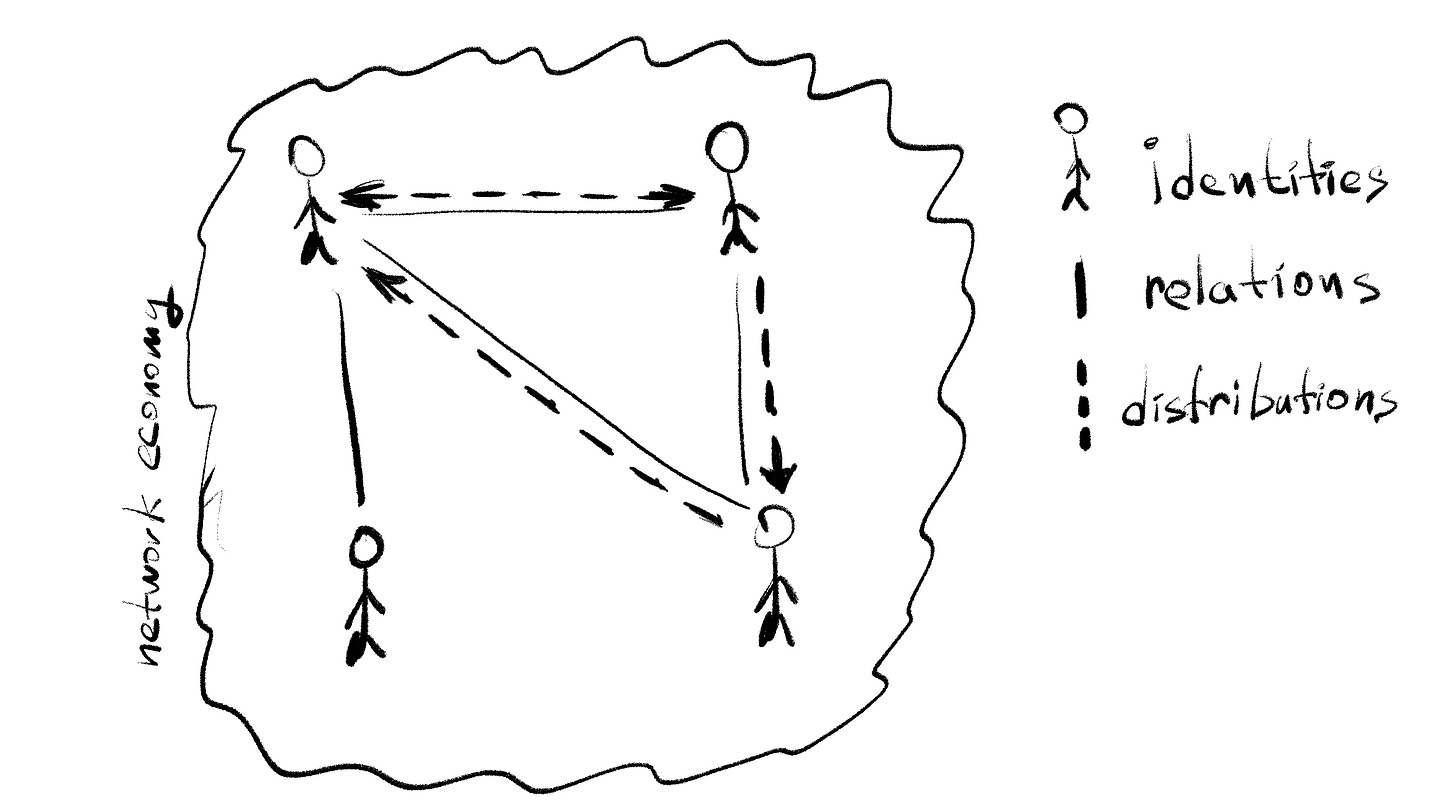Social Networks: basic components and vectors of transformation
Social networks are the constructs enabling to create and maintain relationships between individuals, groups, organizations, or even entire societies.
There are different types of social networks, however all of them have in common a few basic components.
Basic components
Any social network consists of three basic components: Identities, Relations, Distribution.
Identities create relations to interact with each other by distributing various messages and products (content, events, notifications, etc).
The interactions within a network create a network economy which might have explicit or implicit forms of economic value.
Historically, there were only a few social networks at the beginning, but as the internet society evolved and new platforms arose, the need for traveling between became more notable.
Most of the social networks that exist today control all three basic components of it, which makes it for that type of traveling. If the value created within the network belongs to the network (not to its creator), the value has to be re-created again when the environment changes (moving to a new platform or app, platform shuts down, etc).
One of the fundamentals of systems design is the reusability principles. Those principles were originally formulated as a part of OOP (Object-oriented programming) and later the DRY principle ("don't repeat yourself") that defined it as every piece of knowledge or asset must have a single, unambiguous, authoritative representation within a system.
Vectors of transformation
Ability to plug-in your data
Your identity, relations and credentials should be transferable. Whatever platform you’re using, your data should travel with you instead of starting from a blank ‘profile’ every time you enter a new network.
Allowing users to export their digital identity to any cross platform protocol or social graph would be an efficient way to achieve that transferability.
Reputation system
Likewise your identity, your reputation should travel with you. Transferable reputation might solve a group of existing problems with bots, bad actors, network abuse, etc.
Additionally, this could create a new layer of discovery and engagement opportunities between networks and their users.
Reputation itself is a highly dynamic value in real life, and requires a similar level of granularity for social networks too. People behave better in environments where they can earn or lose their status. Binary statuses aka verified/unverified that are dominant today, facilitate network abuses and bad behavior (impersonations, manipulations, toxic behavior, etc).
There are various solutions for the new status system already proposed, for example by adding color to the status badges proposed by @apartovi to differentiate the reputation score.

Distribution to third-party apps
As social networks grow bigger, they tend to disable access to their data and APIs in an attempt to avoid potential data breaches and exploits. That made its users very limited in how they can distribute their data (content, messaging, notifications, etc) to other apps, or instead to lock their data and disallow sharing with other apps.
There are multiple transformation attempts already started today, including Jack Dorsey’s Bluesky, DSNP, and sgraph protocol.
To see the effective industry-wide changes it will take more time and, more importantly, dedication from developers and the internet society to adopt it for a better future.
If you enjoyed this essay, share your thoughts on Twitter and tag me or DM!
about me: I'm an engineer, designer and award-winning musician. In 2019 I introduced a human equity asset class (HCBA) that allows investing in people directly.
I founded creator economy pioneer HumanIPO, and helped to build one of the largest ($250m+ ARR) DCB payment platforms in Southeast Asia. Prior to that, I’ve spent 3 years in Google NYC, and dropped out of my PhD in CS.






